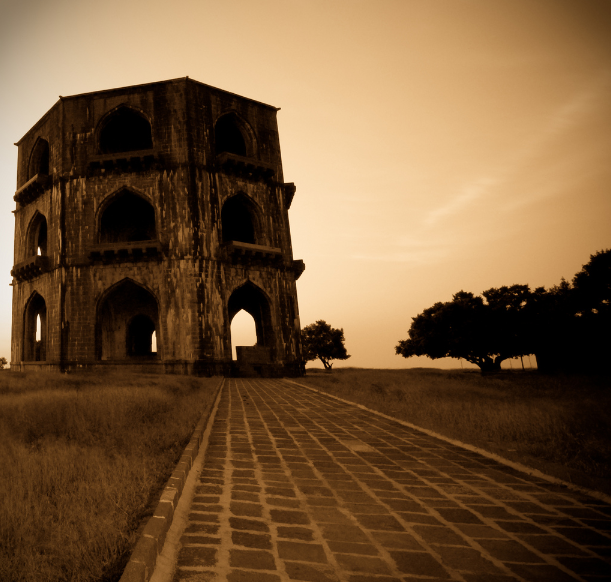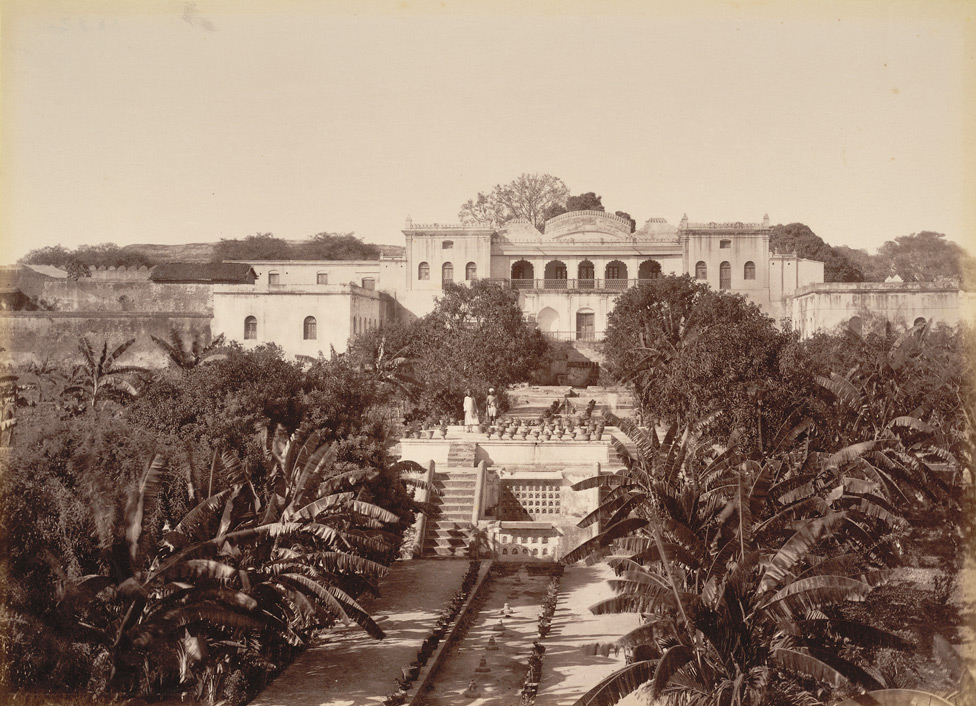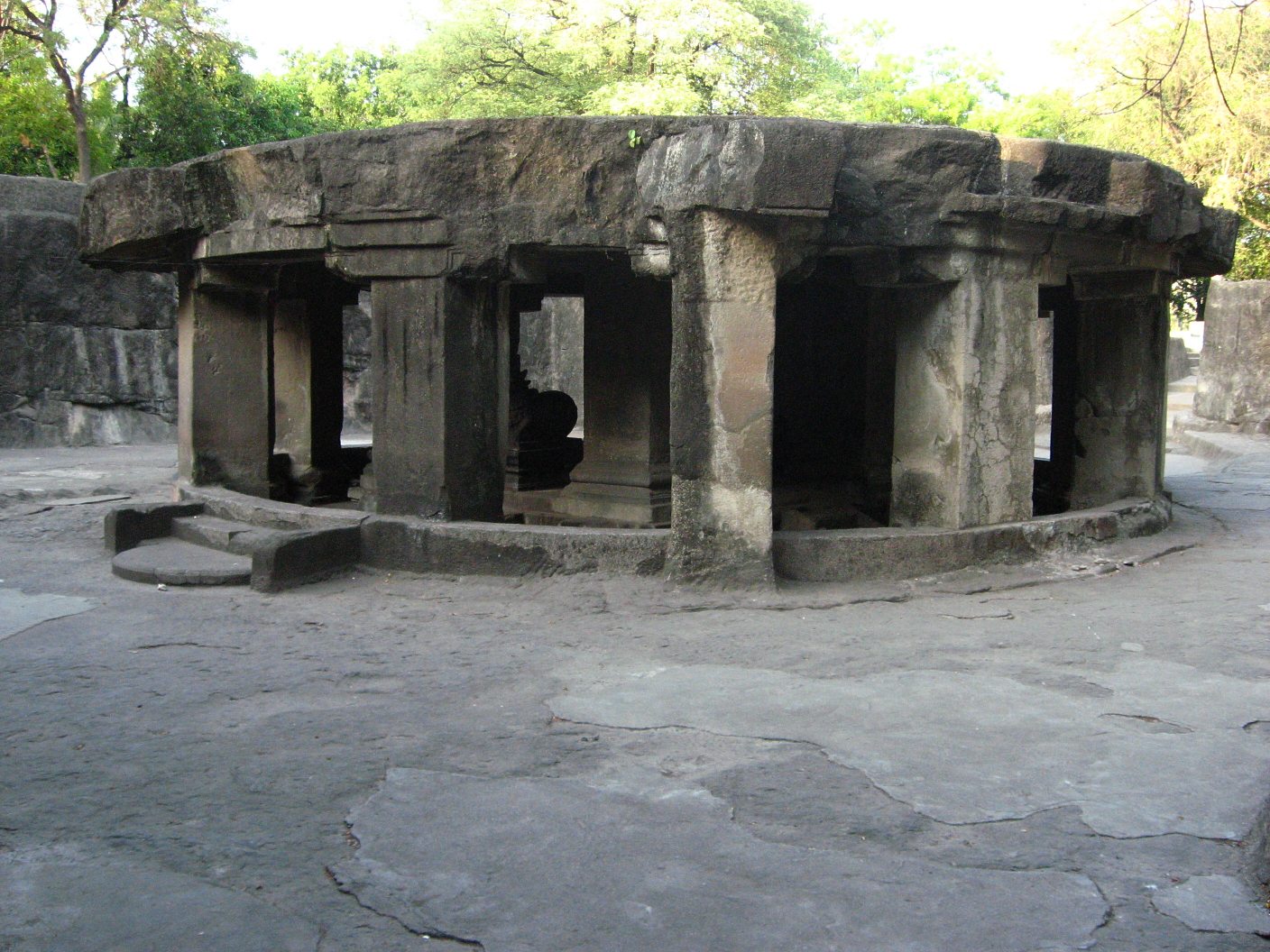|
Ahmadnagar
Ahmednagar (), is a city located in the Ahmednagar district in the state of Maharashtra, India, about 120 km northeast of Pune and 114 km from Aurangabad. Ahmednagar takes its name from Ahmad Nizam Shah I, who founded the town in 1494 on the site of a battlefield where he won a battle against superior Bahamani forces. It was close to the site of the village of Bhingar. With the breakup of the Bahmani Sultanate, Ahmad established a new sultanate in Ahmednagar, also known as Nizam Shahi dynasty. Ahmednagar has several dozen buildings and sites from the Nizam Shahi period. Ahmednagar Fort, once considered almost impregnable, was used by the British to house Jawaharlal Nehru (the first prime minister of India) and other Indian Nationalists before Indian independence. A few rooms there have been converted to a museum. During his confinement by the British at Ahmednagar Fort in 1944, Nehru wrote the famous book ''The Discovery of India''. Ahmednagar is home to the Indian ... [...More Info...] [...Related Items...] OR: [Wikipedia] [Google] [Baidu] |
Ahmadnagar Sultanate
The Ahmadnagar Sultanate was a late medieval Indian Muslim kingdom located in the northwestern Deccan, between the sultanates of Gujarat and Bijapur. Malik Ahmed, the Bahmani governor of Junnar after defeating the Bahmani army led by general Jahangir Khan on 28 May 1490 declared independence and established the Nizam Shahi dynasty rule over the sultanate of Ahmednagar. Initially his capital was in the town of Junnar with its fort, later renamed Shivneri. In 1494, the foundation was laid for the new capital Ahmadnagar. In 1636 Aurangzeb, then Mugal viceroy of Deccan, finally annexed the sultanate to the Mughal Empire. Ahmednagar sultanate was dependent on Koli chieftains for military or soldiers. Koli chieftains of provided the cavalry and infantry for Sultans of Ahmednagar during wartimes. History Establishment Malik Ahmad Nizam Shah I was the son of Nizam-ul-Mulk Malik Hasan Bahri, originally a Hindu Brahmin from Beejanuggar (or Bijanagar) originally named Timapa. Ahme ... [...More Info...] [...Related Items...] OR: [Wikipedia] [Google] [Baidu] |
Deccan Sultanates
The Deccan sultanates were five Islamic late-medieval Indian kingdoms—on the Deccan Plateau between the Krishna River and the Vindhya Range—that were ruled by Muslim dynasties: namely Ahmadnagar, Berar, Bidar, Bijapur, and Golconda. The sultanates had become independent during the break-up of the Bahmani Sultanate. In 1490, Ahmadnagar declared independence, followed by Bijapur and Berar in the same year. Golconda became independent in 1518, and Bidar in 1528. Although the five sultanates were all ruled by Muslims, their founders were of diverse, and often originally non-Muslim origins: the Ahmadnagar Sultanate was of Hindu-Brahmin origins; the Berar Sultanate by a Kannadiga Hindu convert; the Bidar Sultanate was founded by a Georgian slave; the Bijapur Sultanate was founded by a Georgian slave purchased by Mahmud Gawan; and the Golconda Sultanate was of Turkmen origin. Although generally rivals, the sultanates did ally with each other against the Vijayanagara ... [...More Info...] [...Related Items...] OR: [Wikipedia] [Google] [Baidu] |
Ahmednagar Municipal Corporation
Ahmednagar (), is a city located in the Ahmednagar district in the state of Maharashtra, India, about 120 km northeast of Pune and 114 km from Aurangabad. Ahmednagar takes its name from Ahmad Nizam Shah I, who founded the town in 1494 on the site of a battlefield where he won a battle against superior Bahamani forces. It was close to the site of the village of Bhingar. With the breakup of the Bahmani Sultanate, Ahmad established a new sultanate in Ahmednagar, also known as Nizam Shahi dynasty. Ahmednagar has several dozen buildings and sites from the Nizam Shahi period. Ahmednagar Fort, once considered almost impregnable, was used by the British to house Jawaharlal Nehru (the first prime minister of India) and other Indian Nationalists before Indian independence. A few rooms there have been converted to a museum. During his confinement by the British at Ahmednagar Fort in 1944, Nehru wrote the famous book ''The Discovery of India''. Ahmednagar is home to the Indian ... [...More Info...] [...Related Items...] OR: [Wikipedia] [Google] [Baidu] |
Aurangabad
Aurangabad ( is a city in the Indian state of Maharashtra. It is the administrative headquarters of Aurangabad district and is the largest city in the Marathwada region. Located on a hilly upland terrain in the Deccan Traps, Aurangabad is the fifth-most populous urban area in Maharashtra with a population of 1,175,116. The city is known as a major production center of cotton textile and artistic silk fabrics. Several prominent educational institutions, including Dr. Babasaheb Ambedkar Marathwada University, are located in the city. The city is also a popular tourism hub, with tourist destinations like the Ajanta and Ellora caves lying on its outskirts, both of which have been designated as UNESCO World Heritage Sites since 1983. Other tourist attractions include the Aurangabad Caves, Devagiri Fort, Grishneshwar Temple, Jama Mosque, Bibi Ka Maqbara, Himayat Bagh, Panchakki and Salim Ali Lake. Historically, there were 52 Gates in Aurangabad, some of them extant, because ... [...More Info...] [...Related Items...] OR: [Wikipedia] [Google] [Baidu] |
Maharashtra
Maharashtra (; , abbr. MH or Maha) is a state in the western peninsular region of India occupying a substantial portion of the Deccan Plateau. Maharashtra is the second-most populous state in India and the second-most populous country subdivision globally. It was formed on 1 May 1960 by splitting the bilingual Bombay State, which had existed since 1956, into majority Marathi-speaking Maharashtra and Gujarati-speaking Gujarat. Maharashtra is home to the Marathi people, the predominant ethno-linguistic group, who speak the Marathi language, the official language of the state. The state is divided into 6 divisions and 36 districts, with the state capital being Mumbai, the most populous urban area in India, and Nagpur serving as the winter capital, which also hosts the winter session of the state legislature. Godavari and Krishna are the two major rivers in the state. Forests cover 16.47 per cent of the state's geographical area. Out of the total cultivable land in the s ... [...More Info...] [...Related Items...] OR: [Wikipedia] [Google] [Baidu] |
Ahmad Nizam Shah I
Malik Ahmed Nizam Shah ( fa, ) was the founder of the Nizam Shahi dynasty and the Ahmadnagar Sultanate. Ahmed was the son of the Nizam ul-Mulk Malik Hasan Bahri, a Hindu Brahmin from Beejanuggar (or Bijanagar) originally named Timapa who converted to Islam. Ahmed's father was made ''Malik Na'ib'' on the death of Mahmud Gavan and was appointed Prime Minister by Mahmood Shah Bahmani II. Soon after, he appointed Ahmed governor of Beed and other districts in the vicinity of Dowlutabad. He chose to take up residence in Junnar. His initial attempts to take up this responsibility were rejected by the local officers, but, despite his youth and the weakness of the Sultanate, he captured the hillfort at Soonere and the city after a long siege. Using the resources from the city, he campaigned through 1485, capturing Chavand, Lohgad, Tung, Kooray, Tikona, Kondhana, Purandar, Bhorop, Jivdhan, Kuhrdroog, Murud-Janjira, Mahuli and Pali. He was fighting in the Konkan coastal regions ... [...More Info...] [...Related Items...] OR: [Wikipedia] [Google] [Baidu] |
Ahmednagar District
Ahmednagar district (Marathi pronunciation: �ɦ(ə)məd̪nəɡəɾ is the largest district of Maharashtra state in western India. The historical Ahmednagar city is the headquarters of the district. Ahmednagar and Sangamner are largest cities in the district. Ahmednagar was the seat of the Ahmednagar Sultanate of late medieval period (1496–1636 CE). This district is known for the towns of Shirdi associated with Sai Baba, Meherabad associated with Meher Baba, Shani Shinganapur with Shanidev, and Devgad with Lord Dattatreya. Ahmednagar district is part of Nashik Division. The district is bordered by Aurangabad district to the northeast, Nashik district to the northwest, Thane and Pune districts to the southwest, Solapur district to the south and Beed district to the southeast. Officer Members of Parliament * Sujay Vikhe Patil ( BJP) - Ahmednagar *Sadashiv Lokhande ( SHS) Shirdi Guardian Minister list of Guardian Minister District Magistrate/Collector ... [...More Info...] [...Related Items...] OR: [Wikipedia] [Google] [Baidu] |
Bahmani Sultanate
The Bahmani Sultanate, or Deccan, was a Persianate Sunni Muslim Indian Kingdom located in the Deccan region. It was the first independent Muslim kingdom of the Deccan,Ansari, N.H. "Bahmanid Dynasty" ''Encyclopaedia Iranica'' and was known for its perpetual wars with its rival Vijayanagara, which would outlast the Sultanate. The Sultanate was founded in 1347 by Ala-ud-Din Bahman Shah. It later split into five successor states that were collectively known as the Deccan sultanates. History ...
|
Pune
Pune (; ; also known as Poona, ( the official name from 1818 until 1978) is one of the most important industrial and educational hubs of India, with an estimated population of 7.4 million As of 2021, Pune Metropolitan Region is the largest in Maharashtra by area, with a geographical area of 7,256 sq km. It has been ranked "the most liveable city in India" several times. Pune is also considered to be the cultural and educational capital of Maharashtra. Along with the municipal corporation area of PCMC, PMC and the three cantonment towns of Camp, Khadki, and Dehu Road, Pune forms the urban core of the eponymous Pune Metropolitan Region (PMR). Situated {{convert, 560, m, 0, abbr=off above sea level on the Deccan plateau, on the right bank of the Mutha river,{{cite web , last=Nalawade , first=S.B. , url=http://www.ranwa.org/punealive/pageog.htm , title=Geography of Pune Urban Area , publisher=Ranwa , access-date=4 April 2008 , archive-url=https://web.archive.org/web/20071 ... [...More Info...] [...Related Items...] OR: [Wikipedia] [Google] [Baidu] |
The Discovery Of India
''The Discovery of India'' was written by the Indian Independence leader, Jawaharlal Nehru (later India's first Prime Minister) during his incarceration in 1942–1945 at Ahmednagar fort in present day Indian state of Maharashtra by British colonial authorities before the independence of India. The book was written in 1944 but published in 1946. Synopsis The journey in ''The Discovery of India'' begins from ancient history, leading up to the last years of the British Raj. Nehru uses his knowledge of the Upanishads, Vedas, and textbooks on ancient history to introduce to the reader the development of India from the Indus Valley civilization, through the changes in socio-political scenario every foreign invader brought, to the present day conditions. Nehru was jailed for his participation in the Quit India Movement along with other Indian leaders, and he used this time to write down his thoughts and knowledge about India's history. The book provides a broad view of Indian histo ... [...More Info...] [...Related Items...] OR: [Wikipedia] [Google] [Baidu] |
Deccan Plateau
The large Deccan Plateau in southern India is located between the Western Ghats and the Eastern Ghats, and is loosely defined as the peninsular region between these ranges that is south of the Narmada river. To the north, it is bounded by the Satpura and Vindhya Ranges. A rocky terrain marked by boulders, its elevation ranges between , with an average of about .Editors of Encyclopedia Britannica (2014), ''Deccan plateau India''Encyclopaedia Britannica/ref> It is sloping generally eastward. Thus, its principal rivers—the Godavari, Krishna, and Kaveri (Cauvery)—flow eastward from the Western Ghats to the Bay of Bengal. The plateau is drier than the coastal region of southern India and is arid in places. It produced some of the major dynasties in Indian history, including the Pallavas, Satavahana, Vakataka, Chalukya, and Rashtrakuta dynasties, also the Western Chalukya Empire, the Kadambas, the Yadava dynasty, the Kakatiya Empire, the Musunuri Nayakas regime, th ... [...More Info...] [...Related Items...] OR: [Wikipedia] [Google] [Baidu] |
Marathi Language
Marathi (; ''Marāṭhī'', ) is an Indo-Aryan language predominantly spoken by Marathi people in the Indian state of Maharashtra. It is the official language of Maharashtra, and additional official language in the state of Goa. It is one of the 22 scheduled languages of India, with 83 million speakers as of 2011. Marathi ranks 11th in the list of languages with most native speakers in the world. Marathi has the third largest number of native speakers in India, after Hindi and Bengali. The language has some of the oldest literature of all modern Indian languages. The major dialects of Marathi are Standard Marathi and the Varhadi dialect. Marathi distinguishes inclusive and exclusive forms of 'we' and possesses a three-way gender system, that features the neuter in addition to the masculine and the feminine. In its phonology, it contrasts apico-alveolar with alveopalatal affricates and alveolar with retroflex laterals ( and (Marathi letters and respectively). H ... [...More Info...] [...Related Items...] OR: [Wikipedia] [Google] [Baidu] |

.jpg)




.jpg)
